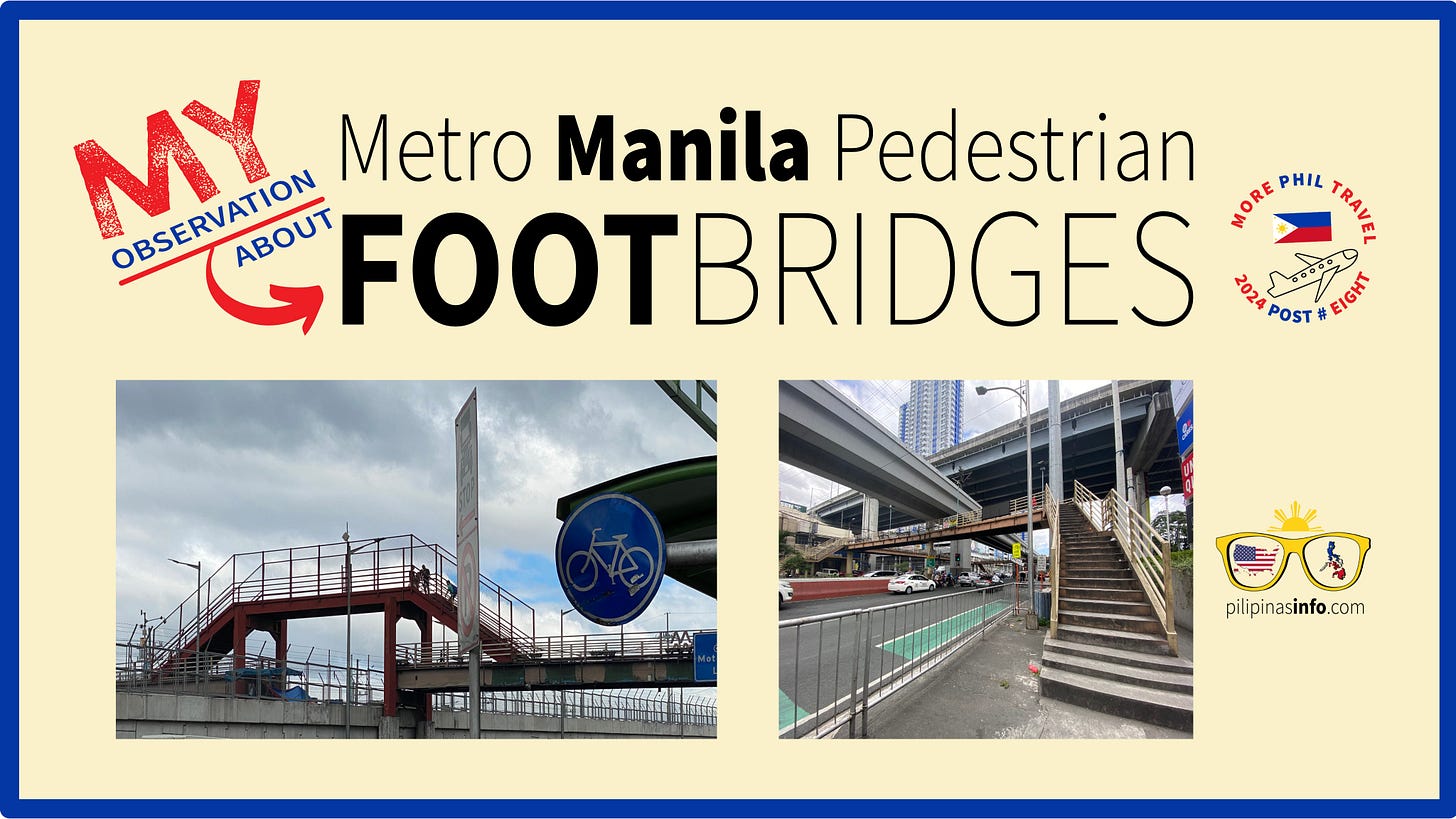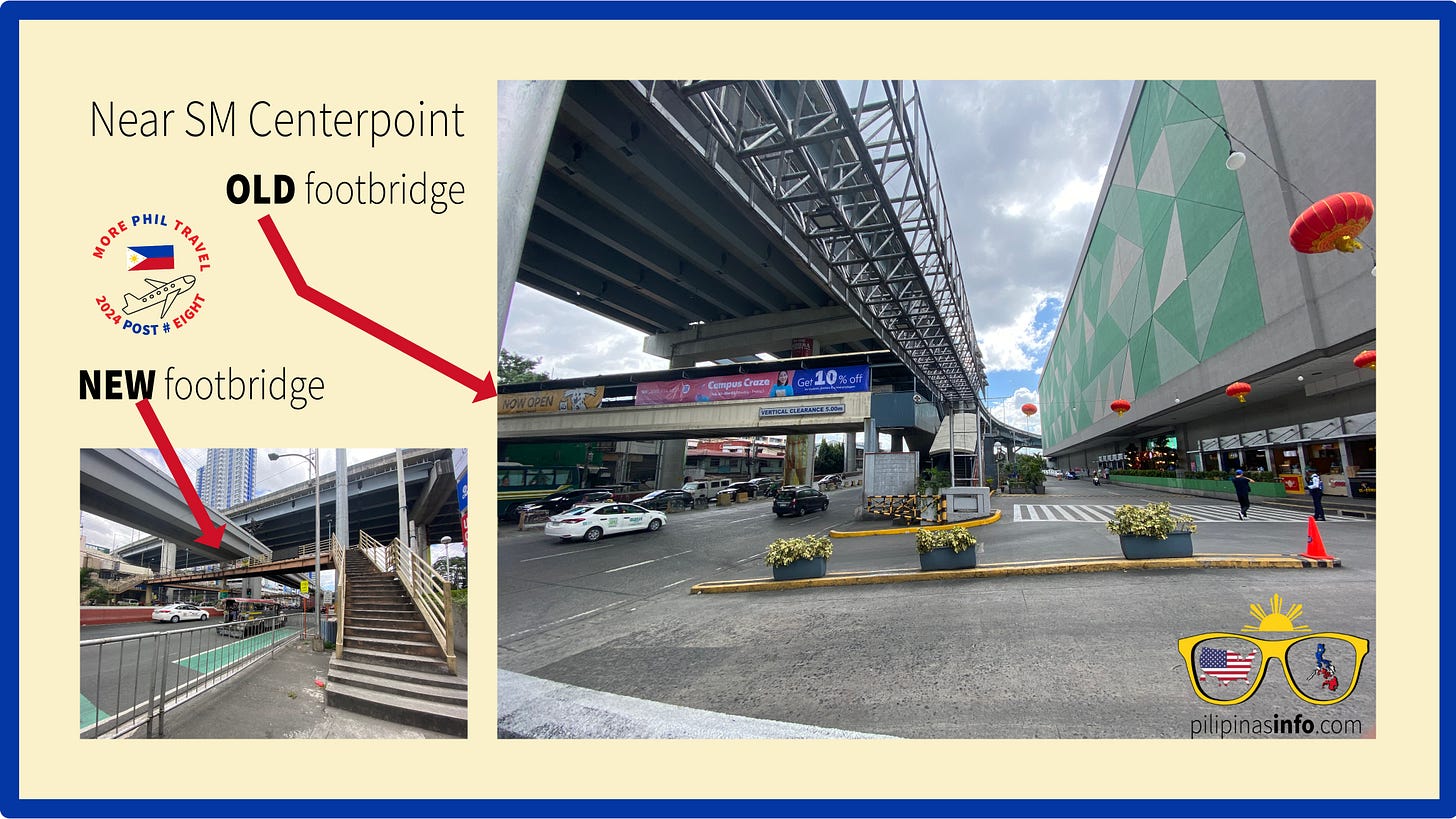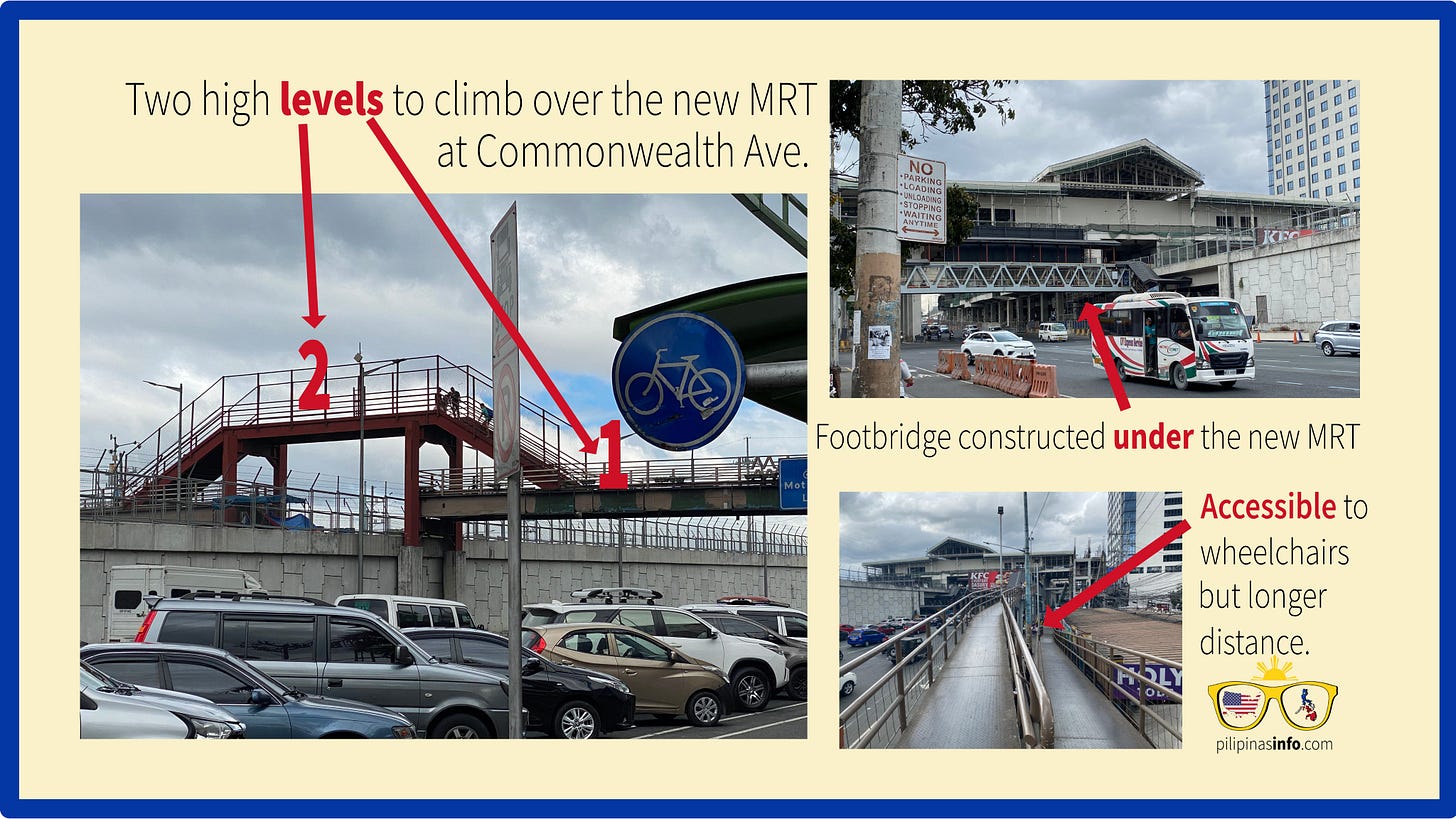Observation about Metro Manila Pedestrian Footbridges for Public Transit Riders
Avoid covered and steep footbridges if you can
The mall security guard at SM Centerpoint told me to cross the street instead of going up the overpass. I was skeptical so I climbed the stairs instead. I should have listened to him. In this post, I will share what I learned from going up and down a lot of pedestrian foot bridges in Metro Manila.
Beware of Covered Footbridges
Look at the picture below. There is weathered, covered footbridge at the side of SM Centerpoint that leads to Central Colleges of the Philippines and Mezza Residences. Stepping inside, a wave of unease washed over me. I should've listened to the security guard's warning. He advised crossing the street because of the potential risk of theft inside the footbridge. Luckily, nothing happened to me.
Emerging from the deserted footbridge, I spotted a group of young boys huddled together. It was unclear whether they were playing or gambling. Relieved to see a couple of police officers nearby, I approached them and confessed I'd regretted using the old bridge. They confirmed my concerns, advising me to utilize the new footbridge located a few blocks away.
Accessibility Issues
A friend of mine, who do not suffer from any leg issues, had to stop at the top of a steep footbridge similar to the left picture below. For the first time, her knees ached and she regretted her decision to climb the bridge.
Unfortunately, many footbridges are steep because they are constructed over light-railway transits. Pedestrians are discouraged to cross the street below so they are forced to climb the stairs. When I saw the steep footbridge at Commonwealth Avenue (pictured above), I looked for an alternative route. Luckily, the next footbridge was constructed under the new Metro Rail Transit (MRT). It was an easy climb and offered an accessible pathway for people with disabilities. So what do you do if you do not want to climb steep footbridges? Well, take a cab or a Grab Ride. Or walk to the next footbridge and hope it is not steep. Next, you’ll learn about the 40-pesos (70 cents) Bus Ride to the Manila Airport.
Note: My Philippine travel posts will end of 2024. Afterwards, I will switch my focus to educational issues based on my dissertation and classroom experiences.
I will follow a book-in-progress style with some posts exclusively for paid subscribers only. My goals are:
to highlight the Filipino-American relationship in education, specifically about the establishment of special education in the Philippines
to share historical details that I discovered in the DC area that are relatively unknown in the Philippines and the USA which might shed light on why there is a special relationship between the two countries
to introduce Delia Delight Rice, who established the first SPED school in the Philippines, to more educators
to see parallel educational strategies that Ms. Rice did and what resourceful Filipino teachers in the USA are doing to survive in the classroom
My goals might change through time depending on your feedback. If you are not an educator, please refer this online newsletter to others who would be interested in this topic. Thank you for reading and supporting Pilipinas Info.
Invitation for Partners
Support Philippine-Info newsletter by subscribing. Consider being a Philippine Info Partner for only $120 per year and you will receive:
copy of the chapter about Delia Delight Rice in the History of SPED in the Philippines dissertation
Mass Reading Assessment report that I did for a Quezon City High School that revealed a common teaching mistake that can easily be corrected
Quarterly PDF copies of posts about Filipino-American relationship in education
free paperback copy of the History of SPED in the Philippines once it is published via Amazon’s KDP





